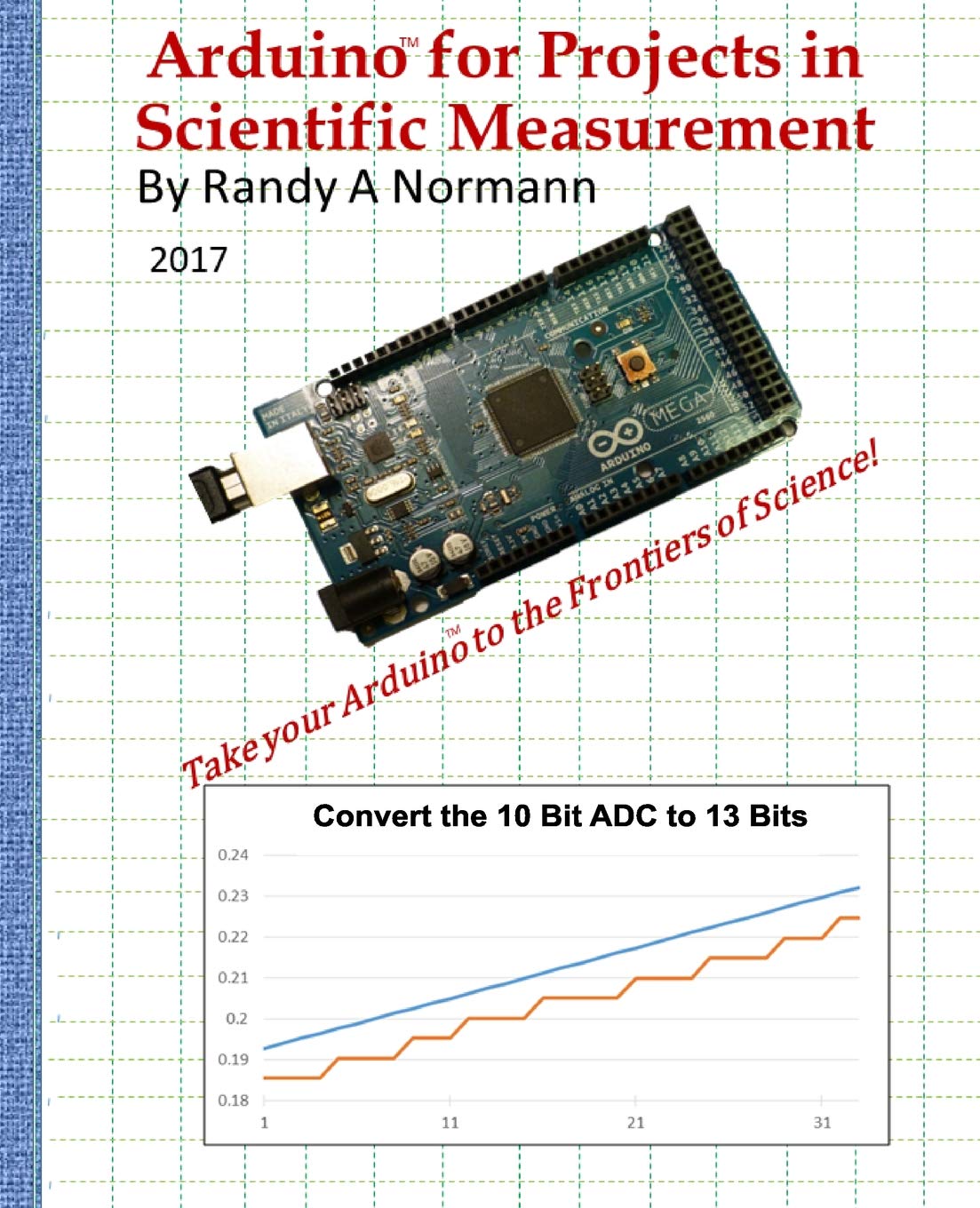

Arduino for Projects in Scientific Measurement: Take your Arduino to the Frontiers of Science!
Description
Arduino for Projects in Scientific Measurement: Take your Arduino to the Frontiers of Science!
Reviews
S**E
Stop just connecting sensors to analog inputs...
The application of this book is quite targeted - Randy has aimed the book at people who want to take measurement seriously. If you wish to move beyond simply believing every number the Arduino calculates, particularly from the analogRead() function then you really need to read this book.The order the of the book contents is very sensible with outlines of what knowledge the reader is expected to have. So there are no pages wasted on for loops and if statements - you are expected to know your Arduino.What you get introduced to are the science and engineering processes required in order to design and build interfaces for your sensors such that they can be reliably calibrated and the best possible accuracy and precision gained from your Arduino setup.If the maths of signal processing (analogue or digital) scares the wits out of you then this book is probably for you. Yes there are some elements of the maths in here but not so you need to know it for exams or even to be able to create usable circuits. Randy provides well structured reasoning for balancing differing needs (high frequency sampling and resolution of measurement) or the ability to save information very quickly. This is all backed by his years of industrial experience which shines through.There are projects but don't everything to be done for you! You need to engage your brain to apply the principles to your own project. But the pathway has been laid out so it's easy to follow.So if you are a serious hobbyist or in R&D on a tight budget then I have no reservation is recommending this book. As a hobbyist you will quickly stop and question whether you should simply connect that sensor output directly to an analog input.You don't even have to create your own interface circuits because Randy has some on sale at his website.
G**G
Information Dense, Practical: a Complete How-To Guide
This book covers many essential topics that nearly all other Arduino books omit: signal conditioning and filter design, details of ADCs (error, linearity, quantization effects and practical dithering), calibration and sensor-system "marriage", grounding, noise and interference control, cables and connections, working environment considerations, and more. It offers practical knowledge to ensure that these aspects of your project are well controlled, and it does so with a practical focus.The book more or less a complete apprenticeship in the practice of instrumentation electronics. You will find yourself re-reading sections of this book whenever you get weird results from your instruments. And when the results look too good. And when you start a new project.Yes, the book is littered with spelling mistakes, homophone substitutions, and similar sub-editing flaws. However, it is easy to look past those to see the information being imparted.(I say that as a person who normally gets irritated by such things, for instance when people write "homogenous" when they mean "homogeneous". You meant "of the same kind", not "from the same origin".)There are a couple of topics not developed as well as I would prefer. In addition to this book I recommend purchasing "Record Keeping For The Radio Experimenter" by James McClanahan and "Protection of Electronic Circuits From Overvoltages" by Ronald Standler.If you need to brush up on your programming skills Jack Purdum's "Beginning C for Arduino" would be useful, along with Simon Monk's "Programming Arduino Next Steps" or a similar book covering power management and interrupt-based programming. The datasheet for the AtMega328 microcontroller is also essential reading, of course.This book is definitely the best value among the microcontroller books I have bought. Highly recommended.
B**T
Das ist mal ein spannendes Buch!
Wer sich mit Messen und speziell mit dem Messen mit Mikro-Controllern (oder auch FPGA's) befasst, sollte - egal ob Anfänger oder schon etwas Fortgeschritten - mal in dieses Buch reinschauen. Alle wichtigen Messvarianten und Messverfahren werden vorgestellt und erklärt. Außerdem werden zu den verschiedenen Messschaltungen die Berechnungsformeln an Beispielen erläutert, so dass man das Gelesene sofort in der eigenen Anwendung umsetzen kann. Es werden viele interessante Themen aufgegriffen - es macht Spaß, das Buch zu lesen.
J**A
Super interesante
Me ha parecido un libro muy interesante. Está bien explicado y es muy didáctico.
L**A
ottimo ! non solo per principianti
fluido, scorrevole e ben articolato .. ottima guida generale per utilizzi non solo hobbisti.una ottima lettura adatta anche a professionisti, gli esempi sono chiari e molto utili !
A**R
web site and email mentioned in the book are not working. No download available.
the web site and email mentioned in the book are not working.No download available for the examples and other software.Very Basic and not always complete in these examples.Examples make mention of the due board, but only a few timesdo get into these examples. Maybe the due was actually not utilized!!!I do not know as the accompanying examples cannot be downloaded and no one replies to emails.
Common Questions
Trustpilot
2 weeks ago
1 day ago
